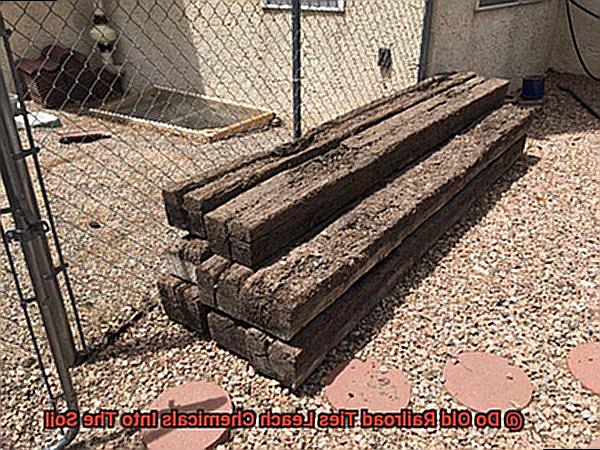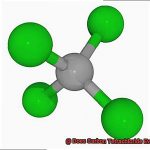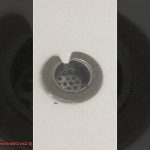Today, we’re tackling a topic that may not be top of mind for many, but it’s definitely worth some attention: the possibility of harmful chemicals seeping into the soil from old railroad ties. We all know that these sturdy ties have been a go-to material for building railway tracks for ages.
But as they weather and wear over time, they can start to break down and release chemicals into the ground. And that’s not good news for our health or Mother Nature.
So let’s dig in and get informed about this pressing issue.
Do Old Railroad Ties Leach Chemicals Into The Soil?
Contents
- 1 Do Old Railroad Ties Leach Chemicals Into The Soil?
- 2 The concerns surrounding old railroad ties and their potential to leach chemicals into the soil.
- 3 Understanding creosote and its effects on the environment.
- 4 Factors that contribute to the leaching of chemicals from old railroad ties.
- 5 Alternatives to creosote-treated railroad ties.
- 6 The importance of testing soil for PAHs.
- 7 Mitigating risks associated with old railroad ties in your yard.
- 8 Conclusion
First off, let’s talk about what exactly old railroad ties are. Also known as cross ties or sleepers, these wooden beams were commonly used to support railroad tracks. They were treated with a tar-like substance called creosote to make them more durable and resistant to rotting. Sounds harmless, right? Well, not quite.
Creosote is made up of hundreds of chemicals, including toxic compounds like polycyclic aromatic hydrocarbons (PAHs) and benzene. When exposed to water, either through rain or irrigation, these chemicals can leach out of the railroad ties and into the surrounding soil. This process can occur over a period of several years and is known as leaching.
So, why should you be concerned about this leaching process? Well, according to a study by the Environmental Protection Agency (EPA), older railroad ties tend to have higher levels of creosote and therefore have a greater potential for leaching. Ties that are over 20 years old are considered more likely to release harmful chemicals into the soil.
But wait, there’s more. In addition to leaching into the soil, creosote can also volatilize into the air, especially in warmer temperatures. This can pose a risk to nearby communities as they may inhale these harmful chemicals.
Furthermore, the EPA has classified creosote as a restricted-use pesticide due to its potential health risks. Exposure to high levels of PAHs has been linked to various health issues such as skin irritation, respiratory problems, and even cancer. And it’s not just humans who are at risk. Plants grown near old railroad ties may absorb these chemicals through their roots, which can then be ingested by animals or humans who consume these plants.
Now, I don’t want to scare you off completely. Not all railroad ties are treated with creosote. Alternative treatments such as copper naphthenate or borate preservatives may also be used, which are considered less toxic and pose lower risks to the environment and human health. However, it’s always better to err on the side of caution when it comes to potential environmental hazards.
The concerns surrounding old railroad ties and their potential to leach chemicals into the soil.
Railroad ties, also known as crossties or sleepers, were once an essential part of our railway systems. But as technology advanced, these wooden beams were replaced with more modern materials, leaving behind heaps of old railroad ties that are now finding their way into our gardens and landscapes. While they may seem like a cost-effective and durable option for landscaping or building retaining walls, old railroad ties come with hidden risks that should not be ignored.
As mentioned before, old railroad ties are often made of treated wood, giving them their characteristic durability and resistance to rot. However, the chemicals used to treat the wood can slowly seep into the soil over time, posing a threat to nearby plants, animals, and even groundwater. The most commonly used chemicals for treating railroad ties are creosote, CCA, and PCP – all of which have been found to be toxic to humans and animals.
One of the main concerns with using old railroad ties in landscaping or gardening is the potential for these chemicals to leach into the soil and be absorbed by nearby plants. This is especially true when the ties are exposed to rain and moisture, which can accelerate the leaching process. Studies have shown that plants grown near old railroad ties have higher levels of these toxic chemicals, which can then be passed on to humans or animals if consumed.
But before you panic and start digging up your garden, it’s important to note that not all old railroad ties pose the same level of risk. The amount of chemical leaching depends on various factors such as the age of the tie, type of treatment used, and its overall condition. Older ties are more likely to have higher levels of leaching as they have been exposed to weathering for a longer period of time. In addition, CCA-treated ties tend to have higher levels of leaching compared to other treatments. And if the tie is damaged or decayed, then the risk of chemical leaching is even higher as the protective layers may have worn off.
Understanding creosote and its effects on the environment.
When it comes to preserving wood, creosote has been a go-to chemical for over 150 years. However, this age-old practice can have serious consequences for the environment and human health. Creosote-treated wood, commonly used in railroad ties, is made up of various chemicals, including polycyclic aromatic hydrocarbons (PAHs), which can be harmful to both plants and animals. But what exactly makes this chemical a cause for concern?
PAHs, found in creosote-treated wood, have been linked to respiratory issues, skin irritation, and even cancer. These chemicals can enter the soil through leaching, where water carries them down into the ground. Once in the soil, they can persist for long periods and pose a threat to plants and animals that come into contact with it.
But that’s not all – creosote-treated wood can also release toxic fumes when burned, contributing to air pollution and potentially harming human health. In fact, the EPA has classified creosote as a probable human carcinogen, meaning it has the potential to cause cancer in humans.
So how can we dispose of creosote-treated wood safely? First and foremost, it is essential to avoid burning it. Instead, proper disposal methods should be followed to prevent these harmful chemicals from entering the environment. This includes taking it to designated hazardous waste facilities or contacting a professional waste management company for proper disposal.
In addition to safe disposal methods, there are also alternatives to creosote-treated wood that can be used for landscaping or retaining walls. These options may include pressure-treated wood that does not contain creosote or alternative materials such as concrete or composite materials.
Factors that contribute to the leaching of chemicals from old railroad ties.
Old railroad ties may seem like a nostalgic piece of history, but they can pose a serious threat to the environment and human health. These seemingly innocuous wooden beams, used to build railroad tracks and other outdoor structures, are often treated with chemicals to prolong their lifespan. But as these ties age and deteriorate, they can release harmful substances into the soil, water, and air.
So what are the factors that contribute to the leaching of chemicals from old railroad ties? Let’s take a closer look.
Composition and Treatment
First and foremost, it’s important to understand the composition of railroad ties. These wooden beams are typically made from hardwood or softwood, which are naturally resistant to decay. However, in order to enhance their durability, they are treated with chemicals.
One common treatment for railroad ties is creosote, a dark brown oil derived from coal tar. While it effectively repels water and prevents rot, it also contains harmful chemicals such as PAHs and benzo[a]pyrene. These substances have been linked to health issues like respiratory problems and even cancer.
Another treatment used for railroad ties is chromated copper arsenate (CCA), which contains arsenic and chromium. This chemical is also effective in preventing decay, but it has been banned by the EPA due to its toxic effects on both humans and the environment.
Aging and Weathering
As old railroad ties age and begin to deteriorate, they can release these chemicals into the surrounding soil. This process can be accelerated by natural weathering processes like rain and erosion. When these ties are exposed to moisture, the chemicals can seep out and contaminate the soil.
Improper Disposal
Improper disposal of old railroad ties can also contribute to the leaching of chemicals into the environment. Burning them or using them as mulch in gardens or landscaping can release toxic fumes and substances into the air and soil. This not only harms the environment, but also poses a risk to human health if the chemicals are ingested or inhaled.
Alternatives to creosote-treated railroad ties.
Firstly, let’s understand why these ties need to be disposed of properly. Creosote-treated railroad ties contain toxic chemicals that can leach into the soil over time, causing harm to plants, animals, and humans. It’s essential to find safe and responsible ways to get rid of them.
So what are the options? One alternative is to use untreated or alternative treated wood, such as ACQ or copper azole. These alternatives are less toxic and have been approved for residential use by the EPA. They can be used in various projects, including landscaping and furniture building.
Another option is to donate the ties to organizations or individuals who may need them for their projects. This way, they can be reused without causing any harm to the environment. Recycling is also a possibility, with some facilities accepting old railroad ties and turning them into mulch or fuel.
If none of these options are feasible, it’s crucial to dispose of the ties properly. This means taking them to a designated hazardous waste facility or following local regulations for treated wood disposal. It’s also important to take precautions when handling these ties, such as wearing protective gear.
Remember, many municipalities have specific guidelines for disposing of creosote-treated wood. It’s essential to research and follow these guidelines to ensure safe and responsible disposal.
The importance of testing soil for PAHs.
As an expert on the topic, I cannot stress enough the importance of testing soil for polycyclic aromatic hydrocarbons (PAHs) when dealing with old railroad ties. These seemingly harmless pieces of wood are often treated with creosote, a mixture of chemicals used to prevent decay and prolong the lifespan of the ties. However, what many people don’t realize is that creosote contains PAHs, which can be harmful to both human health and the environment.
When these railroad ties are disposed of or left to deteriorate in the soil, the PAHs can leach into the surrounding area, potentially contaminating groundwater and harming plants and animals living in the soil. This can have long-lasting effects on the ecosystem and pose a serious threat to our health.
That’s why it is crucial to test the soil for PAHs before taking any action with old railroad ties. Soil testing can determine if there are any levels of PAHs present and if they pose a risk to human health and the environment. The EPA recommends testing for at least 16 different types of PAHs when assessing potential contamination from creosote-treated wood.
Soil testing should be done by a certified laboratory using proper sampling methods. If high levels of PAHs are found, it may be necessary to take remediation measures such as removing the contaminated soil or using a barrier to prevent further contamination. In some cases, it may be best to seek professional help with remediation.
Mitigating risks associated with old railroad ties in your yard.
You may want to think twice before using old railroad ties. These seemingly harmless pieces of wood may be treated with creosote, a wood preservative that contains harmful chemicals. As they age and are exposed to moisture, the creosote can leach into the surrounding soil, posing a potential risk to human health and the environment.
But don’t hit the panic button just yet. There are steps you can take to mitigate these risks and safely dispose of old railroad ties. Let’s dive into what you need to know as an expert on this topic.
First and foremost, it’s important to understand the factors that can affect the level of risk associated with old railroad ties in your yard. The age and condition of the ties play a significant role in determining how much creosote has leached out. The more deteriorated the ties are, the higher the risk. Additionally, the amount of creosote present in each tie can vary, making it difficult to determine the exact level of contamination. And let’s not forget about the type of soil in your yard – some types are better at absorbing and containing these harmful chemicals than others.
So what exactly are these chemicals we’re talking about? Creosote-treated ties contain polycyclic aromatic hydrocarbons (PAHs) and volatile organic compounds (VOCs). These chemicals can have long-term effects on our ecosystem by leaching into groundwater and contaminating nearby water sources. And for us humans, studies have shown that PAHs can remain in the soil for many years and be harmful to our health.
There are steps you can take to protect yourself and your surroundings. If you have old railroad ties in your yard, it’s essential to have your soil tested for PAHs before taking any action. This will give you a better understanding of the level of contamination and inform your next steps. And when it comes to disposal, don’t just toss them in the trash – contact your local waste management facility to see if they accept creosote-treated wood.
Conclusion
To wrap up, it is imperative to be mindful of the potential dangers associated with old railroad ties and their impact on the environment and human well-being. The utilization of creosote-treated wood in these ties can result in toxic chemicals leaching into the soil, water, and air over time. These chemicals can have severe ramifications for not only plants and animals but also for our own health.
As a specialist in this field, I implore you to take action by properly disposing of old railroad ties and exploring alternative materials for landscaping or construction projects. It is also crucial to conduct soil testing for PAHs before making any decisions regarding these ties. This will provide essential insights into the level of contamination and guide appropriate remediation methods.
Remember, it is better to err on the side of caution when it comes to potential environmental hazards. Let us join forces to safeguard our planet and prioritize our well-being by staying informed about issues like old railroad ties leaching harmful chemicals into the soil.





